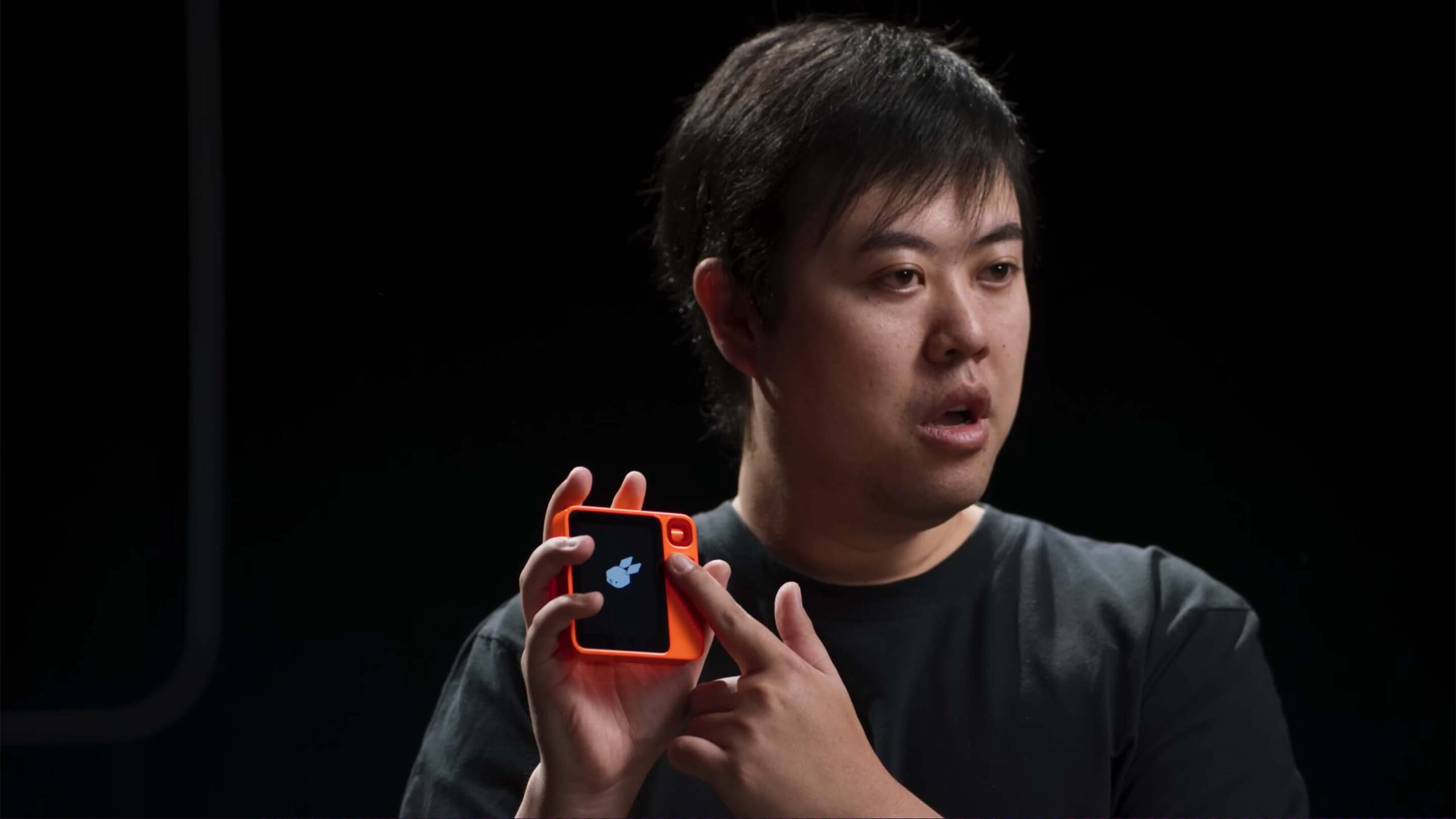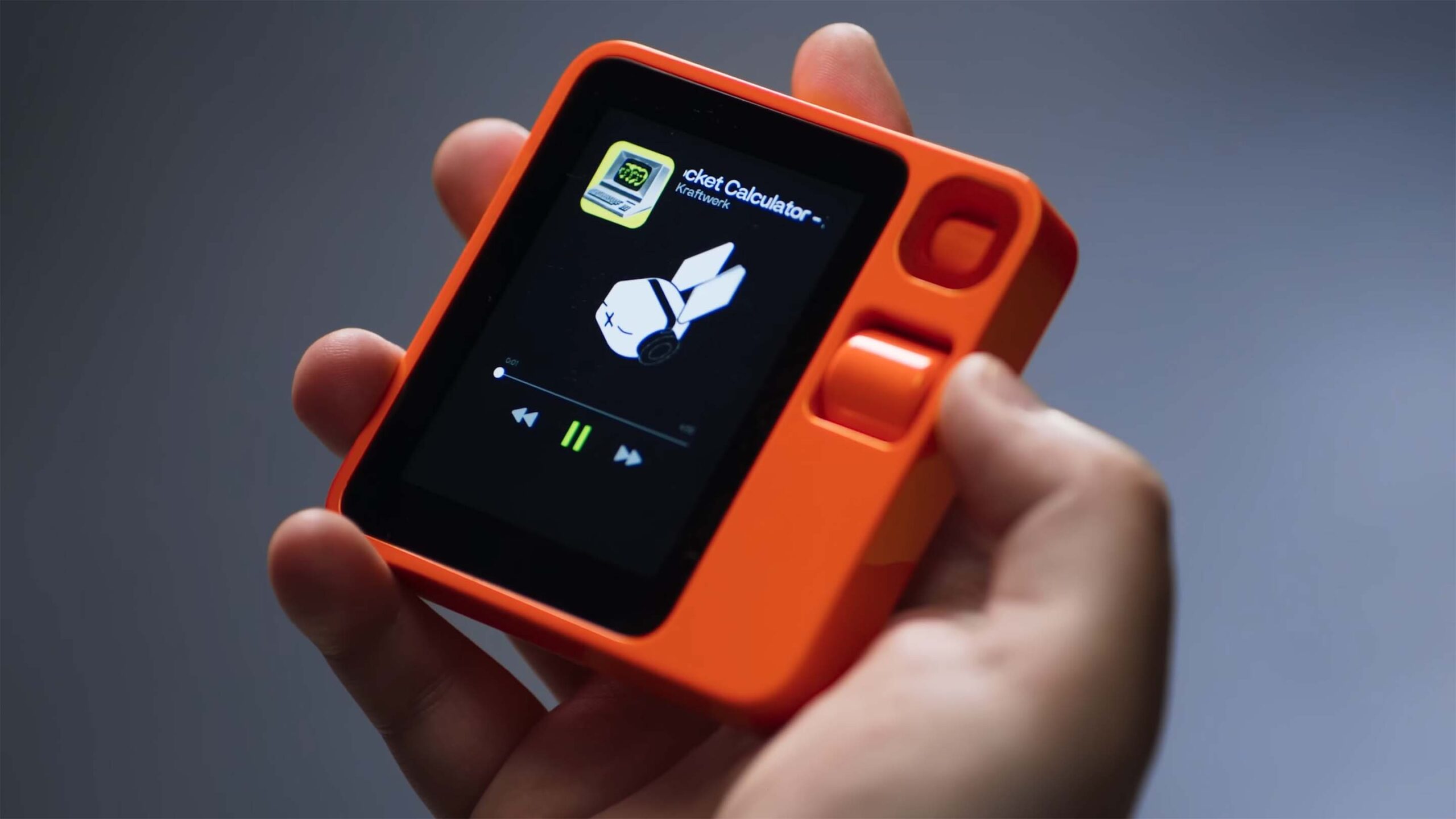AI startup Rabbit believes its new gadget, dubbed the ‘R1,’ can eventually replace your smartphone and the myriad of apps you rely on.
And the crazy thing is, the R1 might actually have a shot.
What is the R1? Well, it’s a $199 USD (roughly $266 CAD) glossy orange square with a 2.88-inch touchscreen. It was designed in collaboration with design firm Teenage Engineering, and it has a weird rotating camera and a scroll wheel for navigation. The R1 runs on a 2.3GHz MediaTek processor and has 4GB of memory and 128GB of storage.
 The specs might be uninspiring, but that’s fine — the real magic is in the software, ‘Rabbit OS.’ Rabbit claims that Rabbit OS is based on a ‘Large Action Model,’ or LAM, rather than a large language model (LLM) like in ChatGPT and Copilot. The LAM allows Rabbit OS to perform tasks for users by interacting with existing interfaces on their behalf. The Verge describes this LAM as “a sort of universal controller for apps.”
The specs might be uninspiring, but that’s fine — the real magic is in the software, ‘Rabbit OS.’ Rabbit claims that Rabbit OS is based on a ‘Large Action Model,’ or LAM, rather than a large language model (LLM) like in ChatGPT and Copilot. The LAM allows Rabbit OS to perform tasks for users by interacting with existing interfaces on their behalf. The Verge describes this LAM as “a sort of universal controller for apps.”
In a video presentation from LAM (see below), founder and CEO Jesse Lyu explains that Rabbit trained the LAM on humans interacting with apps like Spotify and Uber, effectively showing it how apps’ user interfaces work. This enables Rabbit OS to execute commands on behalf of users — for example, instead of opening Spotify and looking up an artist yourself, the LAM handles all that work, which means the users simply request the music they want and Rabbit OS finds it and starts playing it. It’s an ambitious idea and, supposedly, should work across any app since the LAM would interact with it like a person would.
Additionally, the R1 features a training mode where users can teach the LAM how to execute certain tasks and, according to Rabbit, the device can repeat those actions going forward. One example Rabbit shared is teaching R1 how to access Discord and use Midjourney to generate images.
Because R1 and Rabbit OS is all about using existing services, that means you need to connect your services with the device. There’s a web portal called ‘Rabbit Hole’ that R1 owners can use to set up these connections, such as linking your Spotify and Uber accounts. In a demo done by Lyu, Rabbit Hole connects to the services’ login pages — Lyu stressed that Rabbit doesn’t see or store any login credentials for third-party services. Still, you’ve got to trust the company and log in through its Rabbit Hole interface.
 I have approached most of the new AI tools with a hefty degree of skepticism so far, and I maintain that skepticism with Rabbit. The pitch is wildly ambitious, and I doubt that it’ll work as smoothly and quickly as Rabbit showed in its demos. At the same time, Rabbit’s vision for a simple interface where people can simply tell the R1 what they want, and it does it, with no need for people to dig through menus or type on a touchscreen keyboard, is appealing. It’s maybe the first AI pitch that’s sounded like it could be the future.
I have approached most of the new AI tools with a hefty degree of skepticism so far, and I maintain that skepticism with Rabbit. The pitch is wildly ambitious, and I doubt that it’ll work as smoothly and quickly as Rabbit showed in its demos. At the same time, Rabbit’s vision for a simple interface where people can simply tell the R1 what they want, and it does it, with no need for people to dig through menus or type on a touchscreen keyboard, is appealing. It’s maybe the first AI pitch that’s sounded like it could be the future.
The AI-powered chatbots that are rapidly proliferating don’t offer any real practical application. Sure, I can ask ChatGPT questions about something, but beyond providing me dubious information I need to fact check, it can’t really do anything else. Rabbit’s pitch of extending the natural language interaction of ChatGPT and then making it able to do something is really appealing. And as far as dedicated AI hardware goes, I think Rabbit’s R1 runs laps around Humane’s AI Pin. Of course, it remains to be seen if Rabbit can pull it off, or if R1 is doomed to flop.
Update 10/01/2024 5:29pm ET: Rabbit says that it sold 10,000 units in its first day of availability.
When we started building r1, we said internally that we’d be happy if we sold 500 devices on launch day. In 24 hours, we already beat that by 20x!
10,000 units on day 1!
Second batch available now at https://t.co/R3sOtVWoJ5
Expected delivery date is April – May 2024. pic.twitter.com/XqaHqqk36L— rabbit inc. (@rabbit_hmi) January 10, 2024
Images credit: Rabbit


